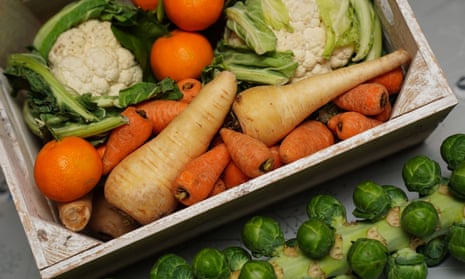A healthy diet provides your body with fluid, nutrients, protein and energy. Eat vegetables, especially dark green, red and orange ones and leafy greens such as kale and spinach (3 or more servings per week) and whole grains (oatmeal, brown rice, quinoa, barley, amaranth). Choose low-fat milk and yogurt. Choose unsalted, fat-free or low-fat nuts and seeds.

With food insecurity still rampant throughout Southern Nevada, the route to access healthy foods isn’t always easy.
The Southern Nevada Health District and the Regional Transportation Commission of Southern Nevada are trying to address accessibility issues by putting a pop-up produce stand at the bus stop.
Partnering with Prevail Marketplace, a local farmers market, the pop-up stand is operational the first Tuesday of every month at the Bonneville Transit Center Plaza in Downtown Las Vegas.
“We are trying to bridge health gaps,” said Pitchaya Pattasema, a health educator with the health district. “Our thought process is that people know they need to eat fruits and vegetables. But how do we make it more accessible to them?”
Communities across the country have used dollars provided by the Centers for Disease Control and Prevention’s Racial and Ethnic Approaches to Community Health (REACH) grant to address health disparities in communities with high burdens of chronic disease.
Last year, the Southern Nevada Health District received $791,860 from the REACH grant, which allows fruit and vegetables to be sold at a reduced rate.
“By improving their access to nutrition, you can improve a person’s health,” Pattasema said. “You can mitigate diabetes and improve heart health, which are chronic diseases our country is battling with today.”
While open to all people, the event hopes to attract people who rely on the Supplemental Nutrition Assistance Program or SNAP, formally known as food stamps, as well as EBT recipients.
Last year, roughly 20% of all its sales at the pop-up stand was from SNAP and EBT recipients.
The produce stand comes as Southern Nevada works to make progress on food insecurity rates.
The Feeding America 2023 Map the Meal Gap showed food insecurity rates across Three Square Food Bank’s service area, which includes Clark, Lincoln, Nye and Esmeralda counties, fell to 12% from 15% the previous year.
About 17.8% of Nevada children are living in food insecure households, which is down from 24.8% in 2022.
The largest rates of food insecurity include Nye ZIP Codes 89049 and 89020 at 29.6% and 21.4%, along with Las Vegas ZIP Codes 89101 at 21.4% and 89109 at 12%.
According to the U.S. Department of Agriculture, 58 of the 688 census tracts in Nevada are qualified as a food desert, an area that lacks adequate access to healthy food.
“We know from research people are willing to travel very far for low prices,” said Miguel Dávila Uzcátegui, a senior regional planner with the RTC. “Proximity is not the only thing we are looking at when we think of access but also price points. You can only imagine if there are only one or two SNAP retailers that are offering healthy food you might be driving very far or take transit to a far location to get that product.”
Access to healthy foods could get worse in the future in some communities.
During ongoing congressional deliberations around a short-term government funding bill, far-right Republicans have sought drastic cuts to the social safety net.
The Center on Budget and Policy Priority estimated their proposal, which ultimately failed, would have stripped SNAP benefits away from roughly 1.3 million people.
Congress last week approved a measure to continue funding the government until Nov. 17, narrowly averting a shutdown.
Additionally, Kroger earlier this year proposed buying Albertsons for $24.6 billion in a deal they hope to close early next year. Nevada Attorney General Aaron Ford has been conducting listening sessions to determine the impact of the merger, including the price and availability of food across the state.
“The fact that we are more reliant on corporations for healthy foods is really scary,” Dávila Uzcátegui said. “We should be thinking about food systems and our ability to produce and distribute food within communities. We should start prioritizing that so our communities can be self-sufficient in the types of food we can grow and feed our children.”
In the meantime, the health district and RTC are already looking to expand the program to other transit stops across the valley where residents are having a hard time accessing healthy foods.
“There are areas throughout the valleys that are food deserts so we are going to be prioritizing those for potential expansions, but those are still to be determined,” Dávila Uzcátegui said.
Source: nevadacurrent.com



















Add comment